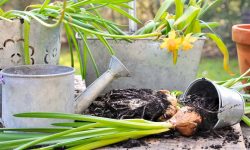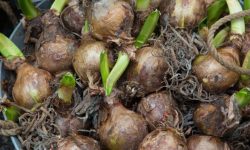Magnolia trees are celebrated for their stunning blooms, rich fragrance, and timeless elegance. These ornamental trees bring charm to gardens with their lush green foliage and spectacular flowers in shades of white, pink, purple, or yellow. While many gardeners opt for purchasing saplings or grafted trees, growing magnolia from seed offers a rewarding experience and a deeper connection to the life cycle of the plant. Understanding how to grow magnolia from seed not only enhances your gardening skills but also gives you the joy of nurturing a tree from its earliest stage.
Magnolia seeds, although slow to germinate and grow, can lead to strong and healthy trees if properly handled. The process involves patience and attention, especially in handling dormancy and stratification. This comprehensive guide will walk you through the critical stages involved in growing magnolia from seed — from harvesting and preparing the seeds to transplanting young seedlings and long-term care.
Understanding Magnolia Varieties and Their Seeds

Magnolias encompass over 200 species, with both evergreen and deciduous types spread across Asia, North America, and Central America. Some of the most common species suitable for seed propagation include Magnolia grandiflora, Magnolia stellata, and Magnolia soulangeana. Each type has unique characteristics in growth habit, flower appearance, and hardiness zone. Understanding the specific magnolia variety you’re working with helps determine the ideal germination requirements and planting timeline.
The seeds of magnolia trees are typically encased in red, fleshy coverings and found within cone-like fruits that mature in late summer to early autumn. These coverings are rich in oils and attract birds and animals that help with natural dispersal. If you intend to grow magnolia from seed, it is essential to collect the seeds at the right time when the fruit splits open and the seeds are fully mature but before wildlife carries them away.
Magnolia seeds are known for their dormancy, meaning they require specific conditions to break this dormant state and encourage germination. The seeds are not immediately ready for planting and need careful preparation. Without proper treatment, they may remain inert for months or even rot without ever sprouting.
Harvesting and Cleaning Magnolia Seeds
The journey begins with identifying mature magnolia fruits on the tree. These fruits typically ripen between September and October, depending on your region and species. Look for cone-like pods that are beginning to split, revealing bright red or orange seeds. These pods can be carefully handpicked or collected after they fall to the ground. It’s important to avoid overripe or moldy fruits, as they may harbor damaged or non-viable seeds.
Once harvested, the seeds must be separated from their outer fleshy coating. This red aril can be slippery and somewhat stubborn, but it is crucial to remove it, as it may inhibit germination if left intact. Soaking the seeds in warm water for a day can soften the outer coating and make it easier to rub off using a soft cloth or fingers. Clean seeds should appear dark brown or black and feel firm when gently pressed.
After cleaning, the seeds should be allowed to air dry briefly before proceeding to the next stage. Proper drying ensures they don’t develop mold during stratification. However, they should not be overly dried or stored for extended periods at room temperature, as magnolia seeds lose viability quickly without cold storage or immediate processing.
Stratifying Magnolia Seeds for Germination
One of the most critical steps in growing magnolia from seed is cold stratification. Magnolia seeds require exposure to cold and moist conditions for an extended period to break their dormancy and initiate germination. This process mimics natural winter conditions that seeds would experience outdoors. Without this step, most magnolia seeds will remain dormant even in ideal planting conditions.
Cold stratification involves placing the cleaned seeds in a moist medium such as sphagnum moss, sand, or vermiculite. The medium should be slightly damp but not soggy to prevent fungal growth. Seeds are then sealed in a plastic bag or container and stored in the refrigerator, ideally at temperatures between 34°F and 41°F (1°C to 5°C). This treatment should continue for at least three to four months.
Throughout this period, the seeds should be checked periodically for mold or premature sprouting. If mold appears, the affected seeds can be rinsed in a mild fungicide or hydrogen peroxide solution and returned to fresh medium. Patience during stratification is essential, as rushing this stage can reduce germination success. Some seeds may begin to sprout even during stratification, and if so, they should be carefully removed and potted.
Sowing Magnolia Seeds in the Right Growing Medium
Once the stratification period ends or sprouting begins, it’s time to sow the seeds in a suitable growing medium. Magnolia seeds require a well-draining, slightly acidic soil mix to support healthy root development. A blend of peat moss, perlite, and loamy garden soil works well. The containers used should have good drainage to prevent root rot and promote aeration.
Sow the seeds just beneath the surface, pressing them gently into the soil and covering them with a thin layer of the medium. Magnolia seeds do not require deep planting. After sowing, water the soil lightly to settle it around the seeds, but ensure it remains moist, not saturated. Consistent moisture is key during germination, but overwatering can lead to damping-off, a fungal disease that affects seedlings.
The containers should be placed in a warm, bright location with indirect sunlight. Magnolia seeds usually germinate best at temperatures between 65°F and 75°F (18°C to 24°C). Germination can take anywhere from a few weeks to several months, depending on the species and conditions. During this stage, it is crucial to maintain humidity and monitor for signs of mold or rot.
Caring for Magnolia Seedlings After Germination
Once seedlings emerge, they should be nurtured carefully to promote strong and balanced growth. Magnolia seedlings have delicate roots and stems that require consistent but gentle care. Ensure they receive bright, indirect sunlight to avoid leggy growth. If grown indoors, fluorescent grow lights can supplement natural light during the shorter days of late winter and early spring.
Watering should be done cautiously, allowing the top layer of soil to dry slightly between waterings while maintaining overall moisture. Magnolia seedlings are sensitive to both drought and excessive moisture, so achieving the right balance is essential. Fertilization is not typically needed in the earliest weeks, but a diluted, balanced liquid fertilizer may be introduced once the seedlings develop their second or third set of leaves.
Transplanting seedlings into larger containers should be done once they have established a few sets of true leaves and their roots begin to fill the current pot. This gradual transition gives them space to grow while minimizing transplant shock. Avoid disturbing the roots too much during this process. Using biodegradable pots or root trainers can help minimize stress when transplanting outdoors later.
Transitioning to Outdoor Conditions
Magnolia seedlings are not ready for outdoor planting immediately after germination. They must be acclimated gradually to outside conditions through a process known as hardening off. This involves exposing the seedlings to outdoor temperatures, light, and wind incrementally over the course of a week or two. Begin by placing them in a sheltered, shaded area for a few hours daily, slowly increasing exposure time and intensity of sunlight.
Once the seedlings have adjusted to outdoor conditions and nighttime temperatures are consistently above freezing, they can be planted in the garden. Choose a location with well-drained soil, adequate sunlight, and protection from strong winds. Magnolias prefer full sun to partial shade depending on the species, and they benefit from slightly acidic to neutral soil pH.
When planting, dig a hole large enough to accommodate the seedling’s root system without crowding. Backfill with the native soil mixed with compost or peat to improve texture and nutrients. Water thoroughly after planting to settle the soil and establish contact with the roots. Adding a layer of mulch around the base helps retain moisture and suppress weeds, but it should not touch the stem directly.
Long-Term Growth and Maintenance of Magnolia Trees
Magnolia trees grown from seed take several years to mature and bloom, with some species taking five to ten years before producing their first flowers. During this juvenile phase, the trees require consistent care to support healthy growth. Watering is especially important during the first few seasons, particularly in dry weather. Deep watering encourages deep root development, which increases drought resistance.
Pruning should be limited during the early years, focusing only on removing dead or damaged branches. Excessive pruning can interfere with natural growth patterns and delay flowering. As the tree matures, light shaping may be performed in late winter or early spring before new growth appears. Fertilization can be done annually with a slow-release formula designed for acid-loving trees, applied in early spring.
Pest and disease management is usually minimal with magnolia trees, though occasional issues such as scale insects or fungal leaf spots may appear. Monitoring the tree regularly and maintaining good air circulation helps prevent these problems. Mulching, watering correctly, and avoiding mechanical damage to the trunk also contribute to a strong and resilient magnolia tree.
Advantages of Growing Magnolia from Seed
While growing magnolia from seed requires time and dedication, it offers several unique advantages. Trees grown from seed tend to have stronger root systems compared to grafted specimens and may exhibit greater adaptability to local soil and climate conditions. The genetic diversity of seed-grown trees also encourages natural variation in flower color, fragrance, and form.
There’s also a deeper sense of satisfaction in watching a magnolia grow from a tiny seed into a blooming tree. This process fosters a connection to nature and an appreciation for the patience and care involved in long-term gardening projects. For horticulture enthusiasts and botanical hobbyists, growing magnolias from seed can be a lifelong passion.
Another advantage lies in the cost-effectiveness of seed propagation. While buying mature magnolia trees or saplings can be expensive, collecting seeds is free and accessible to many. Gardeners who wish to cultivate multiple trees or experiment with different species find seed propagation to be an economical and educational method.
Common Challenges and Troubleshooting
Despite the rewards, growing magnolias from seed comes with its share of challenges. Germination failure is one of the most common issues, often due to improper stratification, old or damaged seeds, or overly wet growing media. Ensuring that seeds are fresh, properly cleaned, and stratified under controlled conditions greatly increases success rates.
Another difficulty involves damping-off disease, a fungal infection that kills young seedlings at the soil line. This can be prevented by sterilizing containers and using a clean, well-drained medium. Avoiding overwatering and ensuring good airflow also helps minimize fungal threats.
Seedling growth can also be slow and uneven, especially in lower light conditions. Supplemental lighting or repositioning containers to receive more indirect sunlight may be necessary. If seedlings appear leggy or weak, improving light quality and spacing them out can promote stronger, healthier development.
FAQ about How to Grow Magnolia from Seed
How long does it take for magnolia seeds to germinate?
Magnolia seeds can take several weeks to a few months to germinate, depending on the species and whether they were properly stratified.
Do magnolia seeds need to be stratified before planting?
Yes, most magnolia seeds require cold stratification for 3–4 months to break dormancy and ensure successful germination.
Can I plant magnolia seeds directly in the ground?
Planting magnolia seeds directly outdoors is possible in fall, but success improves significantly with controlled indoor stratification and germination.
When is the best time to collect magnolia seeds?
The ideal time to collect magnolia seeds is in late summer to early autumn, when the cone-like fruits split open and reveal mature red seeds.
How long does it take to grow a magnolia tree from seed?
It typically takes 5 to 10 years for a magnolia grown from seed to mature and start flowering, depending on the species and growing conditions.
Conclusion
Growing magnolia from seed is a journey that begins with careful preparation and culminates in the long-term beauty of a majestic flowering tree. From harvesting and stratifying seeds to nurturing young seedlings and eventually planting them outdoors, each step plays a vital role in success. Though the process requires patience and persistence, the outcome is deeply satisfying and often breathtaking.
For gardeners passionate about propagation and natural growth, learning how to grow magnolia from seed opens a new chapter in horticultural exploration. With the right knowledge and environment, anyone can cultivate these enchanting trees and enjoy their blossoms for generations to come.






